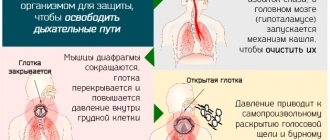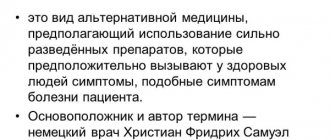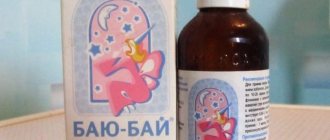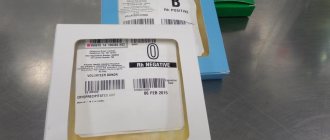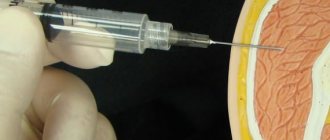Nimulid suspension bottle 50mg/5ml 60ml
A country
India
Country of manufacture may vary depending on the batch of goods. Please check with the operator for detailed information when confirming your order.
Active substance
Nimesulide
Compound
The active substance is nimesulide.
pharmachologic effect
Anti-inflammatory, antipyretic, analgesic. Selectively inhibits cyclooxygenase-2, suppresses prostaglandin synthesis at the site of inflammation. Inhibits lipid peroxidation and does not affect hemostasis and phagocytosis. After oral administration, it is well absorbed from the gastrointestinal tract. Maximum concentration is achieved after 1.5–2.5 hours. The half-life is 2-3 hours. Biotransformed in the liver. The main metabolite is the pharmacologically active hydroxynimesulide. It is excreted primarily by the kidneys. It does not accumulate with long-term use. Nise gel is a new generation non-steroidal anti-inflammatory drug (NSAID) from the sulfonamide class. It has a local analgesic and anti-inflammatory effect. When applied topically, it causes a weakening or disappearance of pain at the site of application of the gel, including pain in the joints at rest and during movement, reduces morning stiffness and swelling of the joints. Helps increase range of motion.
Indications for use
Osteoarthritis, osteoarthritis, bursitis, tendonitis, pain and inflammatory processes (in case of injuries, in the postoperative period, gynecological and infectious-inflammatory diseases). Nise gel: inflammatory and degenerative diseases of the musculoskeletal system (articular syndrome with rheumatism and exacerbation of gout, rheumatoid arthritis , psoriatic arthritis, ankylosing spondylitis, osteoarthritis, osteochondrosis with radicular syndrome, radiculitis, inflammatory damage to ligaments, tendons, bursitis, sciatica, lumbago). Muscle pain of rheumatic and non-rheumatic origin. Post-traumatic inflammation of soft tissues and the musculoskeletal system (damage and rupture of ligaments, bruises).
Interaction
It can increase the effectiveness and toxicity of many drugs, due to their displacement from sites of binding to plasma proteins and an increase in the free fraction in the blood (with the simultaneous administration of hydantoin and sulfonamides, regular medical supervision is required). Enhances the effect of medications that reduce blood clotting; increases plasma lithium levels.
Side effect
Headache, dizziness, drowsiness; very rarely - thrombocytopenia; nausea, heartburn, stomach pain, tarry stools, melena; petechiae, purpura; oliguria; allergic reactions (exanthema, erythema, urticaria). Nise gel: Local reactions: itching, urticaria, peeling, transient change in skin color (not requiring discontinuation of the drug). If any adverse reactions occur, you should stop using the drug and consult your doctor. When applying the gel to large areas of the skin, the development of systemic adverse reactions cannot be ruled out: heartburn, nausea, vomiting, diarrhea, gastralgia, ulceration of the gastrointestinal mucosa, increased activity of “liver” transaminases; headache, dizziness; fluid retention, hematuria; allergic reactions (anaphylactic shock, skin rash); thrombocytopenia, leukopenia, anemia, agranulocytosis, prolongation of bleeding time.
Contraindications
Hypersensitivity, peptic ulcer of the stomach and duodenum in the acute stage, severe dysfunction of the liver and kidneys, bleeding from the gastrointestinal tract, type 2 diabetes mellitus, arterial hypertension, congestive heart failure, pregnancy, lactation. Restrictions for use: children's age (up to 12 years ).
Overdose
Symptoms: increased severity of side effects. Treatment: gastric lavage, administration of activated charcoal.
special instructions
Prescribed with caution to elderly patients, with cardiovascular diseases, including arterial hypertension, bleeding tendency, disorders of the upper gastrointestinal tract, impaired renal function, during treatment with anticoagulants and antiplatelet agents. If visual disturbances occur, you should immediately stop taking the drug and consult an ophthalmologist. Patients with diabetes mellitus and patients on a low-calorie diet should take into account that the drug contains sucrose. Prescribe with caution to patients whose work requires increased attention and reaction speed.
Dispensing conditions in pharmacies
On prescription
Antipyretic drugs for children. Fever, increased body temperature in a child
Increased body temperature is the most common and one of the most important symptoms of various diseases and conditions of childhood. Feverish conditions become the immediate reason for the use of various medications. Therefore, one of the important problems in pediatrics is the uncontrolled use of medications with a low rise in temperature (less than 38 degrees).
This is due to a lack of understanding of the importance of temperature response as an element of the body’s fight against disease. Consultations with a pediatrician at the Markushka children's clinic.
Fever is a protective-adaptive reaction of the body
Fever is a protective-adaptive reaction of the body that occurs in response to exposure to pathogenic stimuli and is characterized by a restructuring of thermoregulation processes, leading to an increase in body temperature and stimulating the natural reactivity of the body. The biological significance of fever is the activation of immune defense. An increase in body temperature leads to increased phagocytosis, increased synthesis of interferons, activation and differentiation of lymphocytes and stimulation of antibody genesis. Increased body temperature prevents the proliferation of viruses, cocci and other microorganisms.
Fever is fundamentally different from the increase in body temperature observed when the body overheats, which occurs due to various reasons: with a significant increase in ambient temperature, active muscular work, etc. With overheating, the thermoregulation center is set to normalize the temperature, while with fever the thermoregulation center purposefully rebuilds the “set point” to a higher level of body temperature.
Release forms and composition of the drug
The drug is available in pharmacies in several dosage forms. However, for children only syrup for oral use is used, packaged in 60 ml dark glass bottles. Each bottle is placed in an individual cardboard box, where you can also find instructions that describe in detail all the rules for using the medication.
The syrup or suspension is a sweet, dark-colored liquid. When you separate the required amount of product, you will notice that it has a viscous consistency. Each box contains not only a bottle and instructions for the product, but also a special measuring cup that makes it easier to dose the medicine at home.
The medicine contains the active substance nimesulide, which has the main therapeutic effect. 1 ml of syrup contains 50 mg of active ingredient.
The composition also contains auxiliary components:
- Macrogol.
- Sodium benzoate.
- Magnesium stearate.
- Sodium disulfite.
Additional substances do not have therapeutic properties. In addition to syrup, gel, oral tablets and lozenges are available. However, these dosage forms are not used in the treatment of children and are indicated only for adults.
Analogs
In some cases, specialists prescribe substitutes for patients with similar medicinal properties.
The most popular substitutes:
- Nemulex is a powder for preparing a solution that is taken orally. Contains the same active ingredient and has similar pharmacological properties, it is prescribed as an analgesic and anti-inflammatory medication for adults and children over 12 years of age. The drug is highly effective and quickly eliminates acute manifestations of the disease.
- Nimegesik – tablets and oral suspension based on nimesulide. It has a pronounced antipyretic, anti-inflammatory and analgesic effect. Prescribed to adults and children over 12 years of age in individual dosages.
Analogs are used for no longer than 5 days in a row and only as prescribed by a doctor.
Causes of fever and increased body temperature in children
Since fever is a nonspecific protective-adaptive reaction of the body, the reasons that cause it are very diverse. Fever most often occurs in infectious diseases, among which acute respiratory diseases of the upper and lower respiratory tract dominate. Fever of infectious origin develops in response to exposure to viruses, bacteria and their decay products. An increase in body temperature of a non-infectious nature can have different origins: central (hemorrhage, tumor, injury, cerebral edema), psychogenic (neurosis - consultations with a pediatric neurologist at the Markushka clinic, mental disorders, emotional stress), reflex (pain syndrome due to urolithiasis) , endocrine (hyperthyroidism - pediatric endocrinologist, Markushka clinic, pheochromocytoma), resorptive (bruise, necrosis, aseptic inflammation, hemolysis); it can also occur in response to the administration of medications as a result of an allergic reaction (for example, to ephedrine, xanthine derivatives, antibiotics and many others - consult a pediatric allergist at the Markushka polyclinic).
With the same level of hyperthermia, fever in children can occur differently . So, if heat transfer corresponds to heat production, this indicates an adequate course of fever and is manifested by the child’s relatively normal state of health, pink or moderately hyperemic skin color, moist and warm to the touch (“pink fever”). This type of fever often does not require the use of antipyretics. In the case when, with increased heat production, heat transfer is inadequate due to impaired peripheral circulation, the course of the fever is prognostically unfavorable. In this case, severe chills, pale skin, acrocyanosis, cold feet and palms (“pale fever”) are noted. These children usually require antipyretic drugs in combination with vasodilators and antihistamines (or antipsychotics). Calling a pediatrician to your home - Markushka clinic.
Antipyretic drugs, remedies, preparations for children. Ibuprofen, paracetamol, nurofen
Numerous studies have shown that among all analgesic-antipyretic drugs, ibuprofen and paracetamol are the safest drugs and are officially recommended by the World Health Organization and national programs in pediatric practice as antipyretics.
Paracetamol and ibuprofen can be prescribed to children from the first months of life (from 3 months of age - without a prescription). Recommended single doses: paracetamol - 15 mg/kg, ibuprofen - 7.5-10 mg/kg (in dosage forms intended for children). Repeated use of antipyretics is possible no earlier than after 4–5 hours ( Nurofen suspension for children is valid for up to 8 hours), but no more than 4 times a day.
It is well known that delivery methods, organoleptic properties and even the appearance of a drug in pediatrics are no less important than the drug itself. Sometimes the effectiveness of the drug depends on the delivery method. Therefore, the emergence of a new over-the-counter form, Nurofen for children, rectal suppositories, has expanded the possibility of using ibuprofen in children from 3 months of age in the complex treatment of acute respiratory diseases. Finding a good pediatrician - the Markushka clinic.
Based on materials from the journal “Pediatrics” (2009, E. E. Lokshina O. V. Zaitseva S. V. Zaitseva)
At what temperature should you give an antipyretic to a child?
In accordance with WHO recommendations, as well as domestic recommendations, antipyretic drugs should be prescribed when the child’s axillary temperature exceeds 38.5 degrees. The exceptions are children at risk of developing febrile seizures, with severe disease of the pulmonary or cardiovascular system and in the first two months of life.
According to national guidelines, antipyretics are recommended to be given in the following cases:
- previously healthy children over three months of age - with a body temperature above 39.0 degrees and/or with muscle aches and headaches;
- children with a history of febrile convulsions - at a body temperature above 38.0 degrees;
- children with severe heart disease (consultation with a pediatric cardiologist) and lungs - at a body temperature above 38.5 degrees;
- for children in the first three months of life - at a body temperature above 38.0 degrees.
In a child with an uncomplicated premorbid background, the temperature reaction, as a rule, is favorable (“pink fever”) if the temperature does not exceed 39.0 degrees; You should refrain from using medications. Drinking plenty of fluids is recommended, physical methods of cooling can be used (the child should be uncovered and wiped with water at room temperature, clothing should be loose, light, the temperature in the room should not exceed 20 degrees, it is possible to use a therapeutic bath with a temperature 2 degrees below body temperature) .
Medicines with antipyretic purposes should not be prescribed for a regular course of administration several times a day, regardless of the temperature level, since this sharply changes the temperature curve, which may complicate the diagnosis of the underlying disease. The next dose of an antipyretic drug should be prescribed only after the child’s body temperature rises again to a critically high level.
The basis of therapy in children is always the treatment of the underlying disease, which led to an increase in temperature, and antipyretic therapy is only symptomatic.
